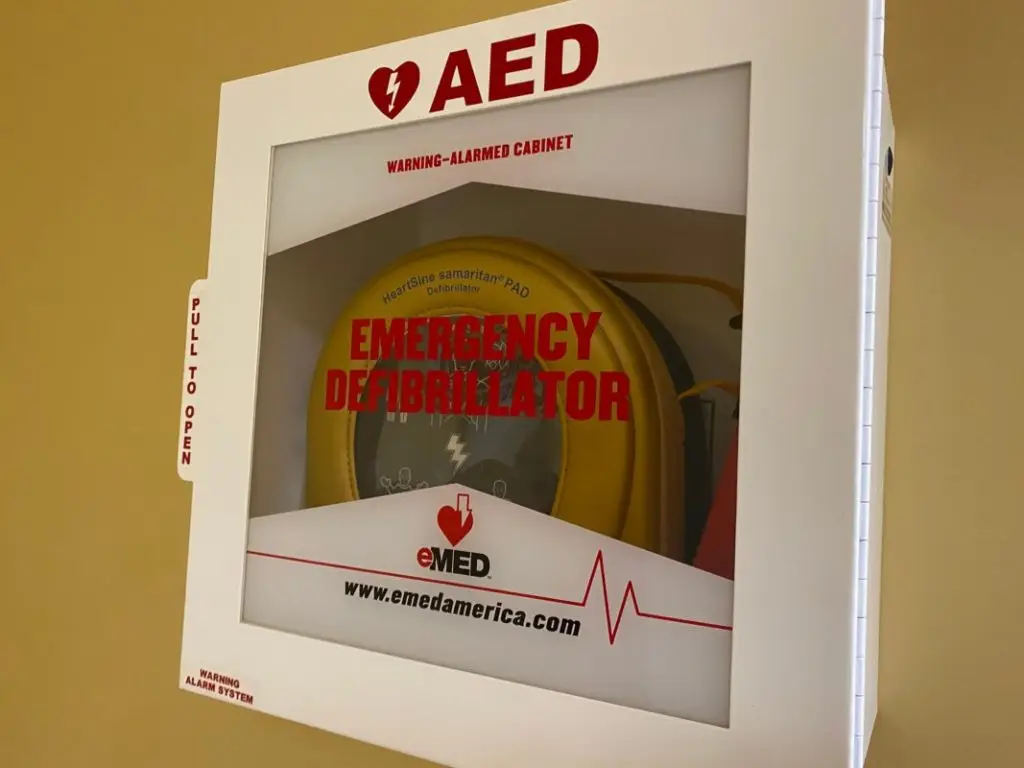Survival from cardiac arrest doubles when a bystander steps in to apply an automated external defibrillator (AED) before emergency responders arrive, according to a 2018 report in the American Heart Association’s journal Circulation.
It was an AED – a device that delivers a life-saving shock to a heart that is in distress – that was used recently to help save Buffalo Bills’ player Damar Hamlin’s life after he suffered a sudden cardiac arrest on the field in Cincinnati, Ohio, while playing the Bengals on Jan. 2.
Kathy Thomas, Arkansas Baptist Disaster Relief volunteer and a retired medical doctor, said studies show that using an AED doubles a person’s chance of survival. Disaster relief volunteers travel with AEDs on hand and are taught about the medical devices during safety training.
The AED aids volunteers as well as the residents of wherever they are serving should they suffer sudden cardiac arrest or other injury in the field.
“It is to protect our workers because we have workers out doing very strenuous work in the field,” Thomas said, noting they have disaster relief debris removal, chainsaw and flood recovery teams. “Every one of our teams have a defibrillator with them in case something happens so we have the ability to address that in the field.”
Thomas said you do not have to be officially certified in CPR or with the AED to use it.
“There is no law that says you have to have a card in your pocket that says you are qualified to do CPR or that you are certified to use an AED. Those are great things to have and make you feel more comfortable in what you are doing, but anybody can do CPR. Anyone can use an AED,” she said, noting most public places have an AED available.
“People need to be aware of that. It’s not just medical facilities that have them. The whole purpose of an AED is to make it available to the public and to try to improve the chances if someone does have a cardiac arrest in a public place.”
Thomas said an AED is very simple to use and comes with step by step, illustrated instructions. The AED.us website says a fully automatic AED will deliver the shock without requiring the user to push the button, while a semi-automatic AED requires the user to push the shock button.
“All you have to do is put the pads on and an AED will take over from there and tell you exactly what to do,” Thomas said.

